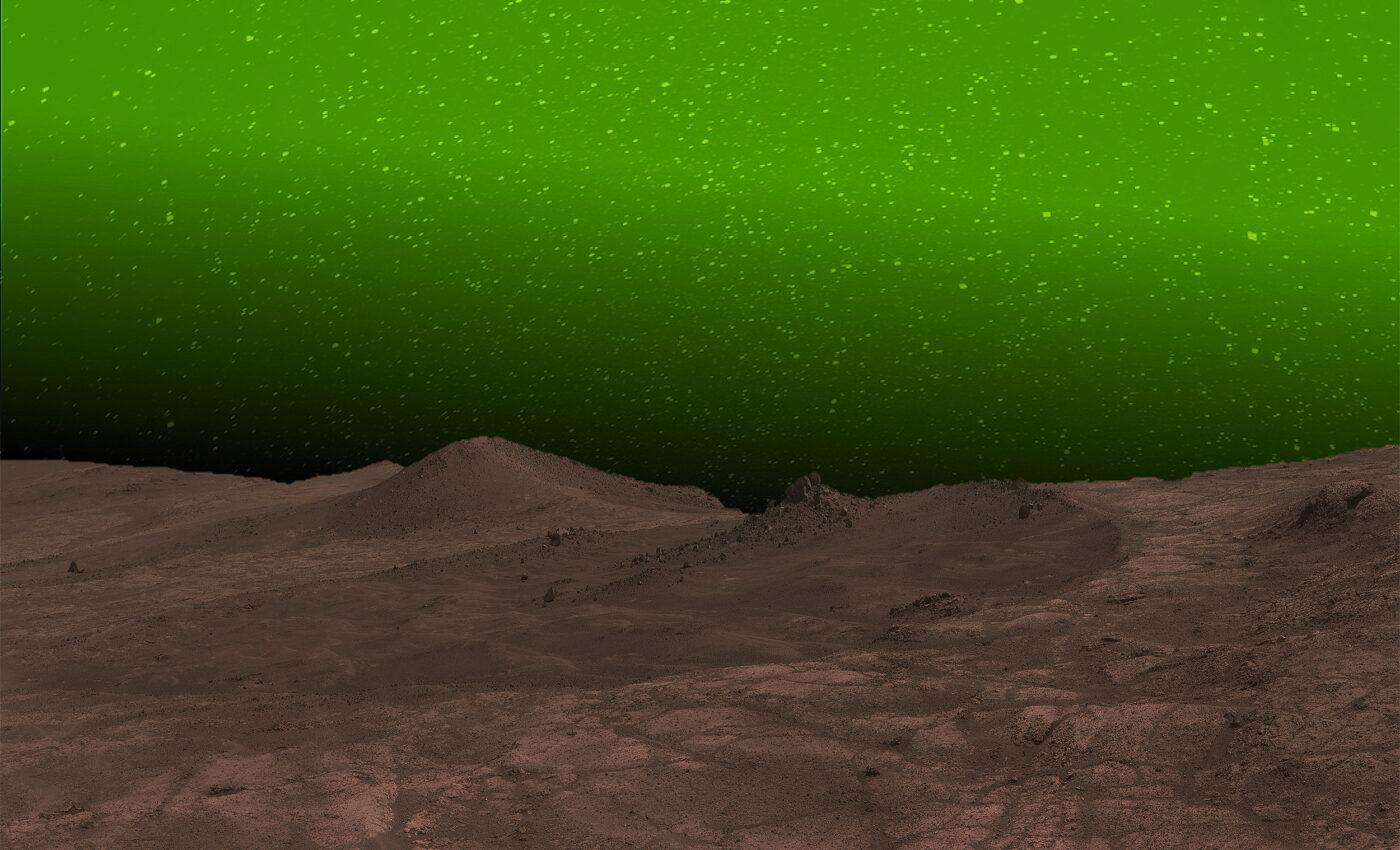
Why the Martian sky often has an eerie green 'nightglow'
The European Space Agency’s ExoMars Trace Gas Orbiter (TGO) mission has made an amazing discovery in space exploration. For the first time, astronauts exploring the polar regions of Mars will witness a unique natural phenomenon: a green glow in the night sky, known as the nightglow, previously unseen in visible light on Mars.
Nightglow: New phenomenon on Mars
This visible nightglow, a familiar occurrence on Earth, has now been observed on Mars. It is produced about 50 kilometers above the planet’s surface when two oxygen atoms combine to form an oxygen molecule. Unlike Earth, this spectacle had remained unobserved on Mars in visible light until this momentous discovery.
The process begins with oxygen atoms on Mars’s dayside. Here, sunlight energizes carbon dioxide molecules, causing them to split and form oxygen atoms. When these atoms travel to the night side, away from the sun’s excitation, they recombine at lower altitudes, emitting a visible glow.
Lauriane Soret is a researcher at the Laboratory of Atmospheric and Planetary Physics at the University of Liège, Belgium and a member of the team that published the discovery in Nature Astronomy. She sheds light on this process, saying, “This emission is due to the recombination of oxygen atoms created in the summer atmosphere and transported by winds to high winter latitudes, at altitudes of 40 to 60 km in the martian atmosphere.”
Jean-Claude Gérard is the lead author of the study and a planetary scientist at the University of Liège. He emphasizes the significance of this discovery.
Gérard said, “These observations are unexpected and interesting for future trips to the Red Planet.”
Monitoring the night side with NOMAD
The TGO, orbiting Mars at an altitude of 400 km, successfully monitored the night side of Mars using the ultraviolet-visible channel of its NOMAD instrument. This instrument, spanning a spectrum from near ultraviolet to red light, oriented itself towards the edge of Mars for improved study of the upper atmosphere.
The NOMAD experiment, led by the Royal Belgian Institute for Space Aeronomy, is a testament to international cooperation. It involves teams from Spain, Italy, and the United Kingdom, among others, working together to deepen our understanding of Mars.
Scientific significance of Mars’ nightglow
Nightglow serves as an important tracer for atmospheric processes on Mars. It provides valuable information about the composition and dynamics of the Martian atmosphere. This encompasses the measurement of oxygen density and the deposition of energy by both the Sun’s light and the solar wind.
Understanding Mars’ atmosphere is crucial for future missions. The atmospheric density affects everything, from the drag experienced by orbiting satellites to the operation of parachutes used for landing probes on the Martian surface.
Mars’ nightglow versus aurora
Nightglow consistently and homogeneously glows in the night sky, while auroras, observed on both Earth and Mars, form through a different process.
Auroras occur when energetic electrons from the Sun hit the upper atmosphere, resulting in a more variable and colorful display. Nightglow and auroras, though different, both showcase a range of colors depending on atmospheric gases at various altitudes.
Discovery of the green nightglow on Mars by ESA’s ExoMars Trace Gas Orbiter marks a significant advancement in space exploration. It opens new doors for understanding Martian atmospheric processes and aiding future exploration of the Red Planet.
—
Like what you read? Subscribe to our newsletter for engaging articles, exclusive content, and the latest updates.
—
Check us out on EarthSnap, a free app brought to you by Eric Ralls and Earth.com.













